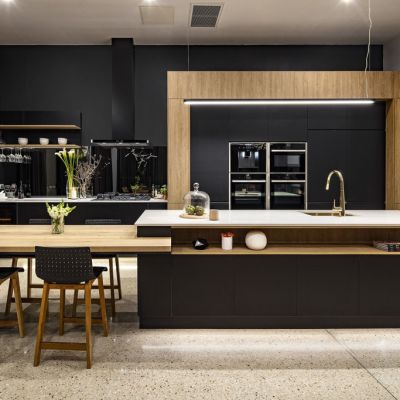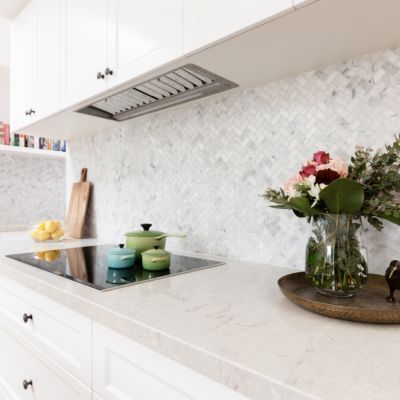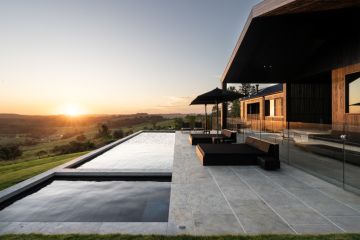What are the best alternatives to engineered stone benchtops

Engineered stone benchtops are on the way out in Australia following a nationwide ban that will come into effect later this year.
If you’re mid-way through a build or renovation or thinking of overhauling your kitchen or bathroom, then it’s time to look at alternatives to an engineered stone benchtop.
Read on to discover the best options for benchtops in your home, the different types of stone, and what they mean for your renovation budget.
What are the rules around engineered stone in Australia?
The Australian Government announced a ban on engineered stone late last year, with the new rules coming into effect on July 1, 2024.
Australia is the first country in the world to ban the use, supply and manufacture of engineered stone. The ban came after a report from Safe Work Australia last year, which found the rates of silicosis and silica-related diseases have “risen substantially in recent years, with a disproportionate number of diagnoses in engineered stone workers”.
Silicosis is caused by inhaling silica dust released from engineered stone during the cutting, grinding and polishing phases.
What’s the difference between natural stone and engineered stone?
The simplest explanation is that natural stone is quarried – dug out of the ground in great slabs – whereas engineered stone is made using a mix of materials.
Engineered, or reconstituted stone, is made by blending pulverised quartz and adding a polymer resin to bind it together. Engineered stone can also include other elements, such as metals, mirrors, shells or coloured glass, which are added to create a unique aesthetic.
Because engineered stone is made up of about 90 per cent quartz, the product has a high level of silica; it produces silica dust or respirable crystalline silica when it is cut, ground or polished. Inhaling this dust can cause irreversible lung damage.
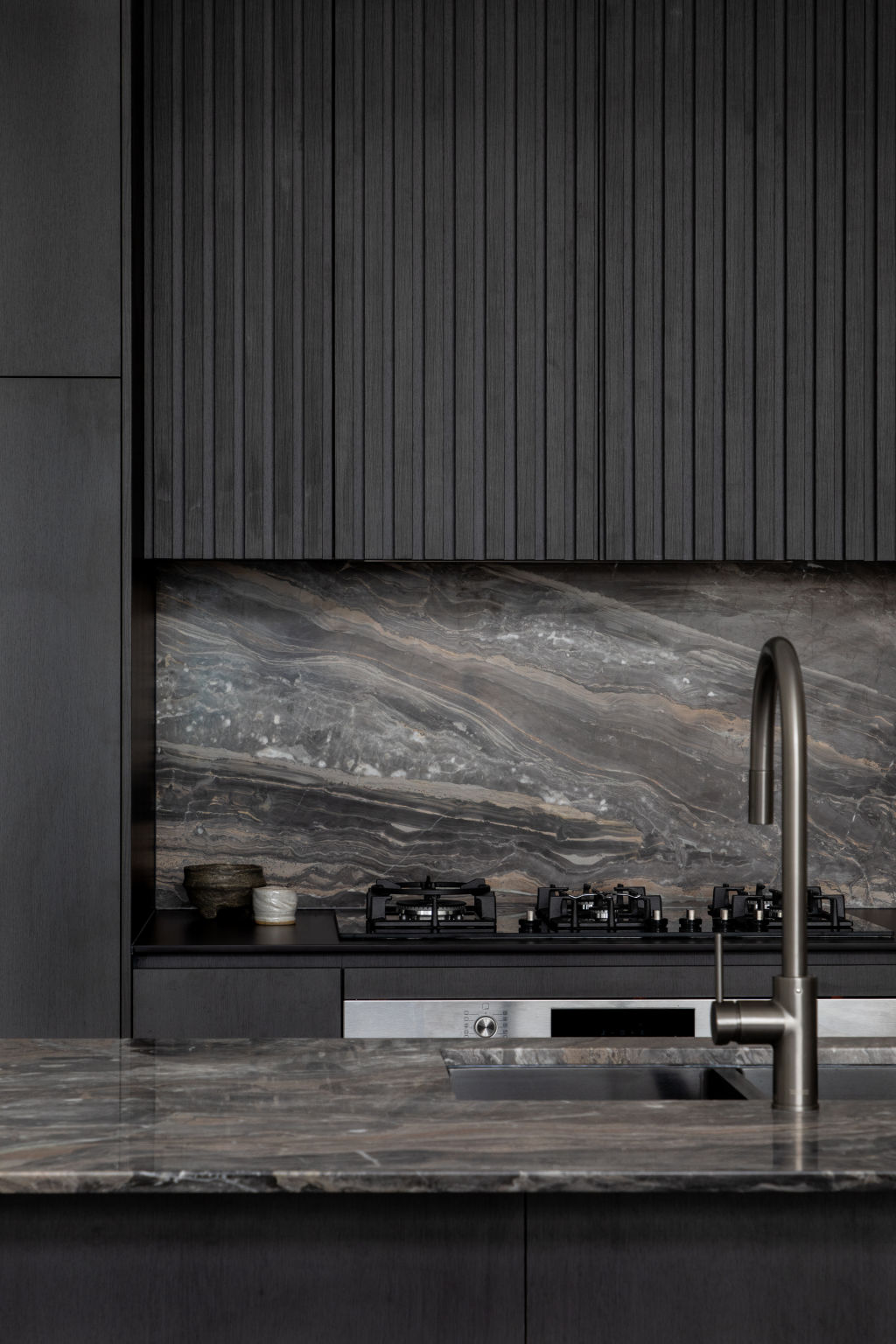
What does the ban on engineered stone mean for homeowners?
For those in the midst of a renovation or about to embark on one, it will mean respecifying your materials for benchtops. While some engineered stone is still available, suppliers are running down their stock, and it will not be available for sale and installation after the ban comes into effect.
Frances Cosway, design director of White Pebble Interiors, says while this may induce some anxiety for homeowners, there are products available that will still provide the same, or better, finish for a renovation project.
“There are definitely products that are available that are going to replicate what was available in reconstituted stone from an aesthetic perspective,” she says.
“On the plus side, what it means is that the products that are replacing reconstituted stone are actually going to have higher performance qualities.
“The impact [of the ban] for consumers is cost. If they want a stone-like finish, they want a surface that is similar to stone, it’s going to cost them more.”
Artedomus managing director Phil Brenton agrees, saying alternative products such as porcelain and natural stone have a superior finish.
“Nearly all of the time, that’s better. You’re getting a product that’s superior technically, especially if you use porcelain, but there’s also a lot of very well priced natural stones that have similar or better characteristics than a lot of engineered products,” he says.
“There’s a vast amount of stock in Australia, a vast amount of materials that are superior in quality, that will give a better result to people,” he says.
What are the trends for kitchen benchtops overseas?
Australia’s move away from engineered stone will likely see a move more in step with Europe and the US when it comes to interior trends and finishes.
Eduardo Cosentino, executive vice president of EVP Global Corporate Sales and CEO of Cosentino Australia, who supplied both engineered and natural stone benchtops to the market, says they are seeing a trend towards porcelain benchtop products overseas.
Cosentino’s Dekton porcelain benchtops are popular for home owners due to their durability and versatility.
“What is happening in Europe and what is happening in the US at this moment is the trend towards porcelain products,” he says.
“We can say that in the most important markets in Europe – like Italy, Spain, Germany, France – 60 to 70 per cent of the market share right now is porcelain.
“For sure, here in Australia, it is something that will happen too. Now that it looks like they don’t have any other option, porcelain will be a big hit here.”

Nine alternatives to engineered stone benchtops
1. Natural stone
The two biggest sellers here are granite and marble, but another emerging natural stone is quartzite (not to be confused with quartz, which is used to make engineered stone).
Granite is the toughest of the natural stones and is a high-end choice for benchtops. It is stain-resistant, heat resistant and the least likely to chip. But all that comes at a price point which might be out of reach.
Marble is another great option for natural stone benchtops. It has a luxury quality and can elevate your kitchen or bathroom. Marble is porous, though, and requires regular maintenance to keep it looking good.
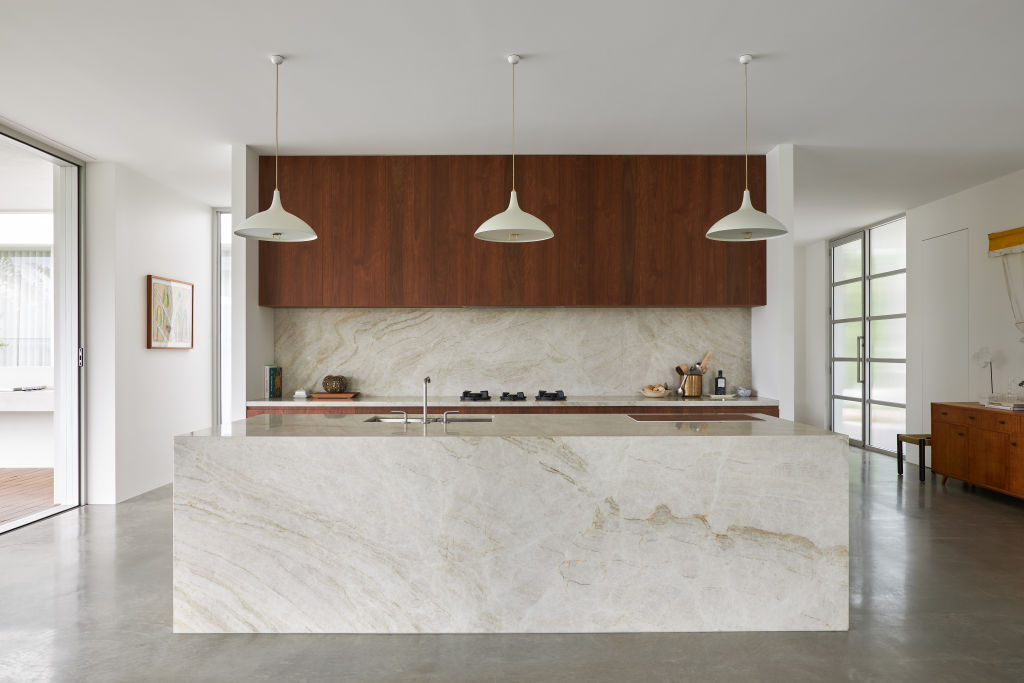
Quartzite is a relative newcomer when it comes to benchtops but is gaining in popularity. The stone is quarried mainly in South America and, due to its density, can take longer to process, thus increasing the price.
“Quartzite is generally a very, very strong, robust, natural stone,” says Brenton.
“And if you take that natural stone and you seal it, it doesn’t etch. It’s very strong, an incredibly strong product.”
2. Porcelain
Porcelain, or ceramic, is likely to be the best straight swap from an engineered stone because it can be manufactured for multiple price points.
“As there was with reconstituted stone, you’ve got your builders range and then you’ve got your more high-end range,” says Cosway.
“Look at the different brands because porcelain is becoming the replacement for companies that were using reconstituted stone as their main product.”
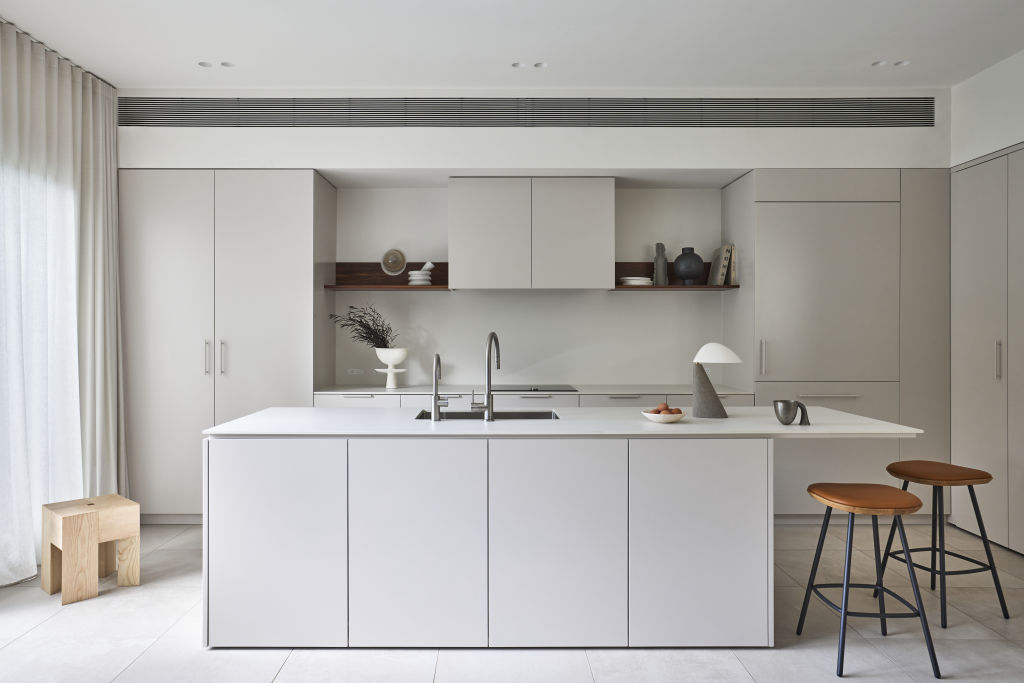
Cosentino says their Dekton product is incredibly versatile and can be made with many different finishes and thicknesses.
“It can look like anything – it can look like stone, like glass, like natural stone, like wood. Any kind of look,” he says.
“It’s not just for countertops. Where engineered stone limited us mainly to countertops and vanity tops, with Dekton, we are widening the design options.
“We can use for the countertops, we can use it for the floor, we can use it for the wall cladding … we can use it for our frescoes because there’s no resin. And all of a sudden the design has so many other applications.”
3. Solid surface
Solid surface benchtops, sometimes known as Corian, are an acrylic that can mimic the look of a natural material. The benchtops are non-porous and can be joined nearly invisibly, meaning you won’t see any seams.
They can be susceptible to heat and scratches over time but are generally low maintenance.
4. Timber
Solid timber benchtops are popular among those building or renovating with a sustainability mindset or a more rustic, provincial look. Timber also allows homeowners to use recycled products, upping the sustainability factor.
But be warned, timber benchtops require regular maintenance – oiling – and are not as durable as stone, so marks will appear over time.
If you’re after a low-maintenance, pristine finish, this is not for you.
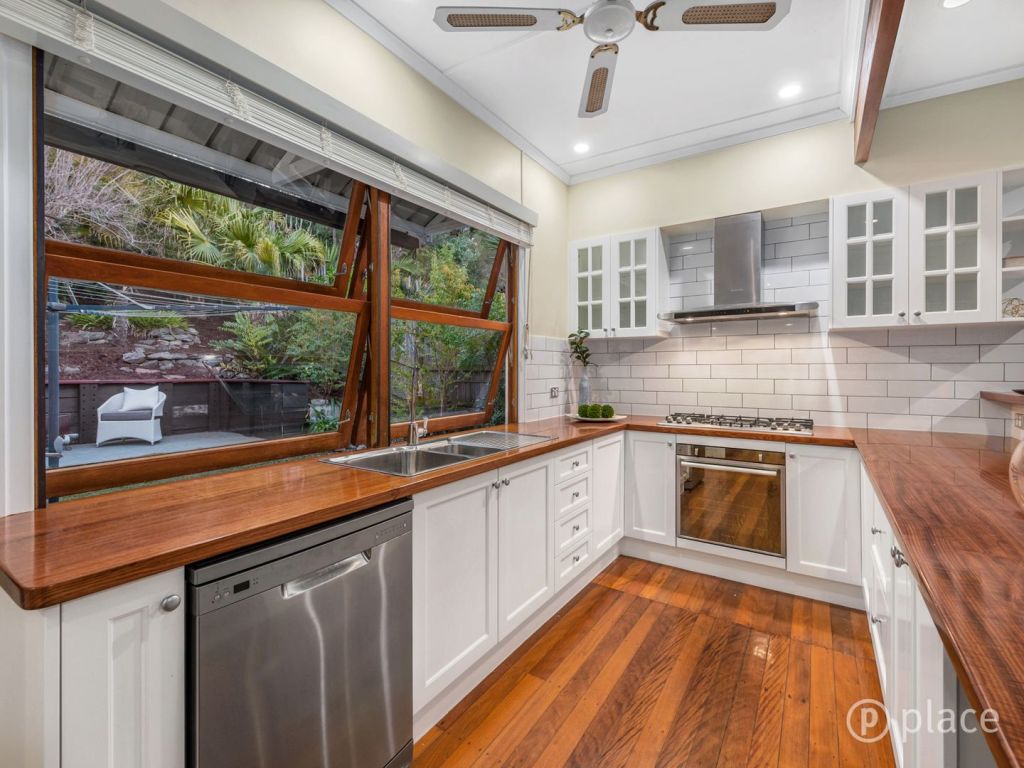
5. Laminate
Cosway predicts the ban on engineered stone could see a revival of laminate as a cost-effective alternative.
“Laminate is not how we knew it in the ’70s, it doesn’t have that terrible edging anymore,” she says.
“There are plenty laminate benchtops that mimic stone, that have that stone look or that concrete look. Some of the ones out there at the moment that mimic concrete are incredible.
“I think what we’re going to see is people will spend money in the kitchen, and they will up the budget for getting a porcelain or a nice solid surface so they can really get the durability and the look that they’re after, and I think that the compromise will then go back to the bathrooms.
“What’s going to replace reconstituted stone in the bathrooms? I think laminate is going to become more popular. People will not necessarily want to spend the extra to run it (natural stone/porcelain) through the whole house where they could have done that with reconstituted stone, and so I think that laminate may actually make a comeback.”
6. Stainless steel
Highly durable and super hygienic, stainless steel is a high-end benchtop solution.
If it suits the overall aesthetic of your home – and your budget – then stainless steel is an excellent option for those looking to create a chef’s kitchen.
7. Concrete
Concrete benchtops must be poured into moulds onsite, putting them at the more expensive end of alternatives.
But they can be customised with tinting or aggregate running through them. Concrete benchtops are not as durable as stone and can chip easily.
8. Recycled glass
Relatively untested in Australia, some manufacturers are looking into glass as an alternative to engineered stone.
“It’s something that we are studying at this moment but the properties and performance of a product based in glass are completely different than a regular engineered stone,” says Cosentino.
“We will decide in the coming weeks if we want to introduce it in the market or not.”
9. Tiles
A relatively new trend, Brenton says they have installed a number of tile benchtops in kitchens as it allows you to have uniformity throughout a space.
“As a finished product it looks really cool,” he says.
“It’s a glazed tile, so the glazed tile itself is pretty robust. It’s not as robust as a ceramic [and] the glaze is not as robust as a porcelain slab.
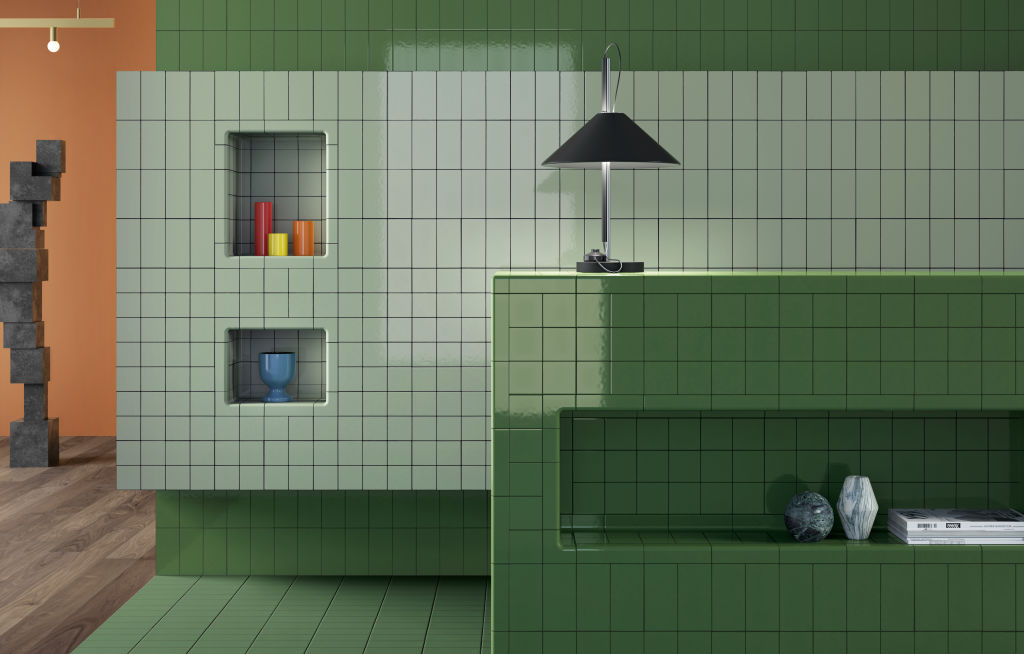
Brenton says the biggest downside is having a benchtop with a lot of grout in it, which can discolour over time and is susceptible to stains.
“Would I do it from my kitchen bench with four kids and a daughter who’s learning to bake? Probably not; I’d probably choose something else.
“But their design concept aesthetically is fantastic. “
We recommend
States
Capital Cities
Capital Cities - Rentals
Popular Areas
Allhomes
More
